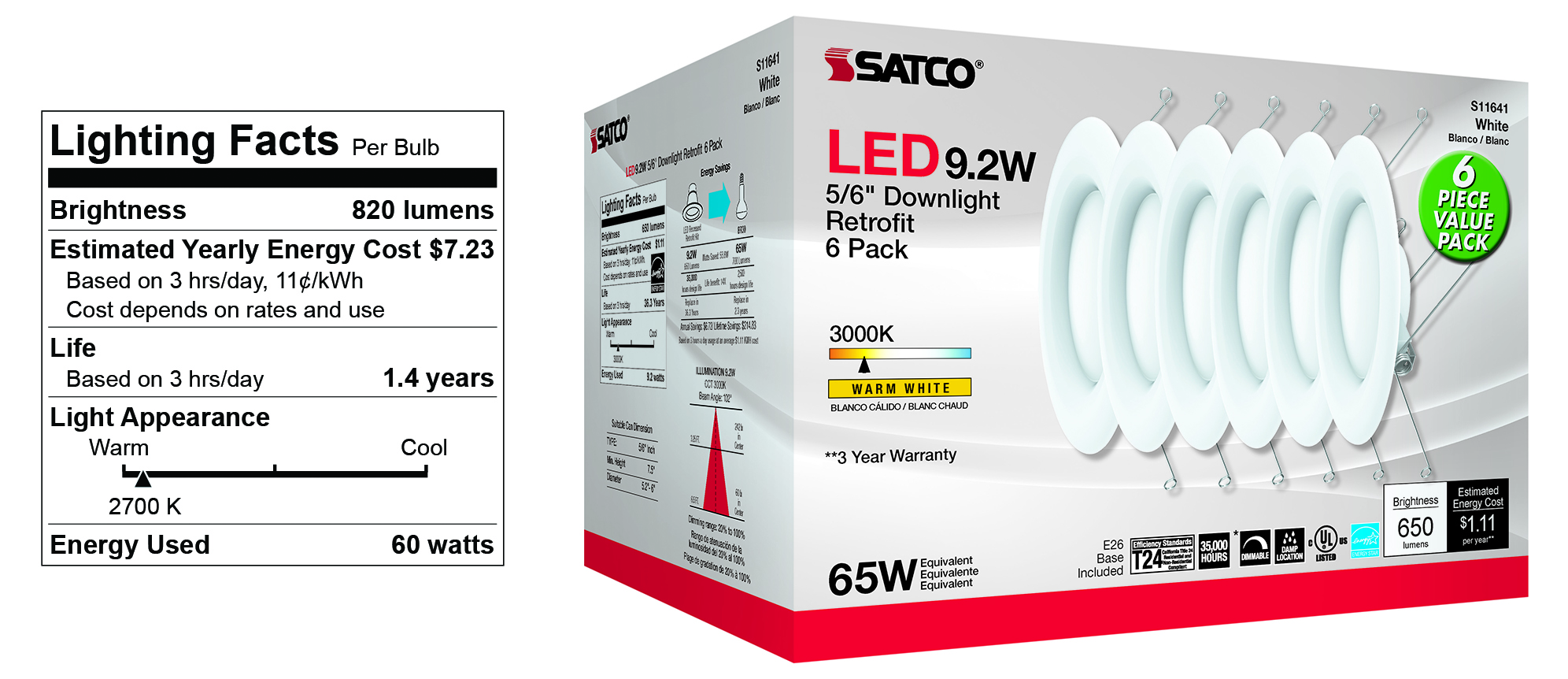Light Bulb Label Information

When shopping for light bulbs, you may have noticed that the packages look like they have dietary information printed on them. For the uninitiated, these “Lighting Facts” can be rather intimidating, but fear not, Costello’s can break the information down for you, and allow you to make the purchase choice that is best for your needs.
Light Appearance (Light Color):
This bar measures light on a scale of “Warm” to “Cool”, using Kelven (K) as its measuring stick. Warm yellow home lights usually have a color temperature of around 2700K, while cold white light range up over 5000K. While personal taste will play a part in your choice, a standard rule of thumb is that warmer lights are best for smaller, “cozy” spaces intended to create a relaxed atmosphere, where cooler lights are best for larger, more productive spaces.
Energy Use:
A light bulbs Watts USED to be not only an indication of how bright it was, but also how much electricity it consumed. With LEDs and other newer technologies, you may find a “Watt Equivalent” label; this indicates how bright the bulb glows as compared to the old Watt system. Ex: a 10-Watt LED bulb may have a Watt Equivalent rating of 60-Watts. This is useful when buying replacement bulbs for appliances / fixtures that have a wattage preference indicated.
Lumens:
As stated before “Watts” are no longer used as the measure of brightness for a bulb, this is now indicated by “Lumens”. The higher the Lumens, the brighter the bulb.
Bulb Life:
How long a bulb can be expected to last. While LED bulbs do not actually burn out, they do grow dimmer over time, and are considered to be “Dead” after their luminocity decreases below 30%.
Energy Star:
This certification indicates that the bulb in question exceeds government standards for energy conservation and warranty length. If you use these bulbs, you may be eligible for rebates from your energy utility. To find out if you qualify, please check out THIS site: energystar.gov/rebate-finder
LED Blue Light Warning:
Some manufacturers have started indicating if a light bulb emits blue light above a certain level. Exposure to certain levels of blue light before bed time is believed to contribute to sleep issues. While not indicating danger per say, this warning may be a good indicator that you should avoid said bulbs in your bedroom.
CRI - Color Rendering Index:
Indicates how colors look under this bulb’s light as compared to sunlight. CRI ranges from 0 to 100. Higher CRI indicates a truer the color would appear under natural light.
Omindirectional:
Shines in all directions
PAR or BR:
Used for Recessed and Floodlight bulbs. To identify the diameter of these bulbs, simply take this number and divide by 8.








